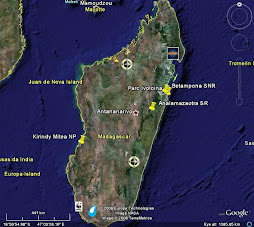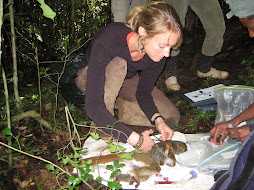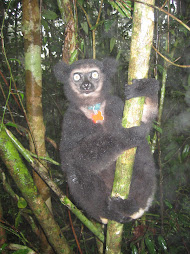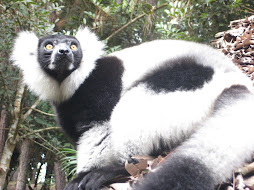
Just in case you were getting bored with me, there’s a new character to introduce into this story—I’ve been joined recently by my Malagasy counterpart, a master’s student in the Department of Primatology and Biological Anthropology at the University of Tana, Herman Andry Rafalinirina. The Malagasy Ministry of Water and Forests and the park management agency, ANGAP, have devised a system whereby all foreign researchers are assigned to sponsor and mentor a Malagasy student from a relevant department at the university. For the duration of the research project and on into the future, I will be working with Herman to develop his master’s project, analyze his data and help him with revisions on his thesis. (Hey, wait a second, did I just get signed up to work on a second dissertation?!) It’s a system that aims to train a huge number of young Malagasy environmental professionals, who learn methodology and project management from their mentors (you mean me??) Obviously you can tell that this is all new to me—we’re figuring it out as we go along. So far things have been going well. After several discussions, Herman will be working on a project separate but complementary to mine. He’ll be comparing water content and characteristics of fecal specimens from Microcebus species on both the west and east coasts. More fecal!









.jpg)
.jpg)
.jpg)
.jpg)
.jpg)